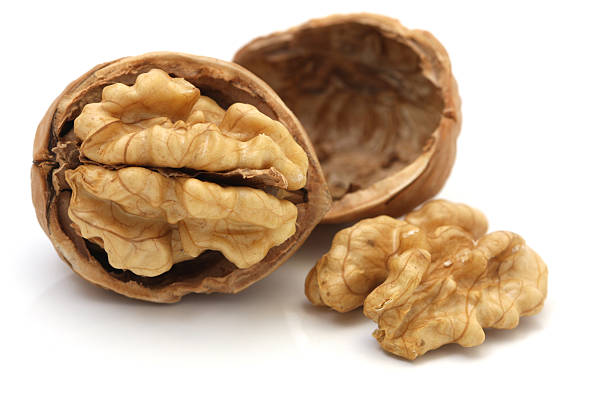
Home Remedies for Yeast Infections
Overview
A vaginal yeast infection (vaginal candidiasis) is caused by an overgrowth of a fungus that naturally lives in your vagina, called Candida albicans. This overgrowth triggers irritation, inflammation, itching, and painful discharge. Most women experience a yeast infection sometime during their lifetime.
If this is your first time experiencing the symptoms of a yeast infection, you should visit a gynecologist to verify that you actually have a yeast infection.
But if you have recurring yeast infections, or if you simply don’t want to go the prescription route with an antifungal cream, there are other ways to try to treat a yeast infection.
Some of these remedies use ingredients that you might already have in your home. Their effectiveness varies, and evidence for their success is mostly anecdotal. Keep reading to find out about some popular home remedies for yeast infections.
1. Greek yogurt
A review of research published in the Journal of Antimicrobial Chemotherapy found that some probiotics can be effective against C. albicans.
Yogurt can be considered a probiotic because it contains live bacteria, such as Lactobacillus acidophilus. These bacteria are essential to creating a healthy environment in your vagina. They can help treat an overgrowth caused by an imbalance.
Plain Greek yogurt is the best kind to use for this home remedy. Make sure that the yogurt doesn’t contain added sugar, which fuels growth of the Candida fungus.
2. Boric acid
Boric acid is a powerful antiseptic that some women claim is useful for treating yeast infections that are resistant to other remedies. According to a 2009 study, topical boric acid showed encouraging results as a treatment for vaginal infections. Some health websites claim boric acid vaginal suppositories may also be effective in treating vaginal yeast infections.
Boric acid is toxic in large amounts. It can lead to kidney damage, acute failure of the circulatory system, or death if you absorb enough of it. To avoid this, don’t use boric acid on broken skin and don’t take it orally. If you’re pregnant, you should not use boric acid in any form.
Always mix boric acid with water before applying it to your vagina or vulva area.
3. Essential oil of oregano
Common oregano, or Origanum marjoram, is what you usually find in your grocery store’s spice section. The oil of oregano used to treat yeast infections isn’t the same type, however. Look for oil of oregano made from wild oregano, or Origanum vulgare, like the one seen here. It contains thymol and carvacrol, which are powerful antifungals.
A study published in the journal Molecular and Cellular Biochemistry found that wild oregano oil could stop or slow the growth of C. albicans, depending on the dosage used.
Oil of oregano is a natural blood thinner, so don’t use it if you take blood thinners for another health condition. Also don’t use it if you have blood-clotting issues, such as from a vitamin K deficiency.
Essential oils should not be taken orally. They are meant to be inhaled as part of aromatherapy. While some studies are examining other ways to use oregano essential oils, at this time it’s recommended that you use it diluted in a carrier oils, such as olive or sweet almond oil. Mix three to five drops essential oil per ounce of carrier oil. Then, apply it to the skin in massage or inhale it through a diffuser. Do not apply essential oils near your vagina.
4. Probiotic suppositories and supplements
Probiotics help restore the bacteria-yeast balance throughout your body. If you start a regimen of oral probiotics that contain strains of the lactobacillus acidophilus bacteria, you can bring your digestive tract and vaginal flora back into alignment.
Oral supplements take about 10 days to reach full effect, so some women use probiotics as vaginal suppositories to see results more quickly. Probiotic suppositories have also been shown to be effective for treating vaginosis, according to Harvard Health.
5. Coconut oil
Coconut oil is a fatty oil derived from the flesh of the coconut. The oil has many health benefits, including antifungal properties. Studies have shown that coconut oil is effective against C. albicans, making this home remedy one of the few with strong evidence that it actually works.
To treat a vaginal yeast infection using coconut oil, be sure to buy pure, organic coconut oil. You can apply the oil directly to the affected area. For more detailed instructions, see here.
6. Tea tree oil
Tea tree oil is an essential oil that’s used to kill fungi, bacteria, and viruses. Research shows that a vaginal suppository containing tea tree oil may help treat vaginal infections. Tea tree oil is also believed to help maintain a healthy balance of flora in the vagina.
Tea tree oil is incredibly powerful. Make sure to dilute it with a carrier oil such as jojoba or coconut oil if you’re going to use it as a vaginal suppository. Only use tea tree oil occasionally, and never swallow it.
You can buy tea tree oil online and in some grocery or health food stores.
7. Apple cider vinegar
One popular yeast infection remedy is an apple cider vinegar bath. Vinegar has many medicinal uses, some more proven by research than others. When you add a half cup of apple cider vinegar to a lukewarm bathtub and soak for 20 minutes, the acidic component of the vinegar is supposed to eliminate any harmful microorganisms.
A vinegar bath is not the same as vinegar douching, which aims to flush out all bacteria (good and bad) from your vagina. Doing so leaves you more prone to a recurrence of the yeast infection.
8. Garlic
Garlic was shown in a lab study to be an effective Candida killer. But there is some debate over whether it will help cure yeast infections outside of a lab setting. If you’d like to try garlic to treat a yeast infection, add more garlic to your diet. Some websites recommend inserting garlic in the vagina, but burns and significant pain have been reported.
9. Hydrogen peroxide
Hydrogen peroxide is a bacteria and yeast-killing antiseptic, according to lab studies. While it won’t work on every species of yeast, some women swear by using hydrogen peroxide topically when they get a yeast infection. Make sure that you dilute hydrogen peroxide before applying it to your genitals, and don’t use it for more than five days in a row.
10. Vitamin C
Vitamin C is an immune system booster. A strong immune system allows your body to bring itself back into balance. Vitamin C (also called ascorbic acid) has antimicrobial components when it’s distilled into tablet form, so some women use it to kill candida overgrowths.
Like many other home remedies, using a vitamin C tablet suppository might burn the sensitive skin of your vagina. Instead, try increasing your intake of vitamin C to boost your body’s ability to beat the yeast infection.
What to expect
Most home remedies bring relief within a few days. Some may take up to a week. Call your doctor if your symptoms worsen or if new symptoms appear at any time during treatment. Also call your doctor if you have persistent irritation that’s separate from your yeast infection symptoms.
If your infection goes away with treatment but then returns, contact your doctor for advice. You may need a prescription-strength treatment.
Preventing vaginal yeast infections
Follow these tips to help prevent future yeast infections.
- Limit the amount of sugar and processed foods you consume. Yeast thrives on sugar.
- Wear loose-fitting, cotton underwear.
- Don’t spend extended periods of time in wet clothes or bathing suits. Yeast grows in warm, moist environments.
- Only use antibiotics when necessary.
- Don’t use douches unless advised by your doctor, and avoid vaginal deodorant sprays and scented vaginal lotions. They may alter the balance of good bacteria and yeast in your vagina.
Takeaway
Home remedies may or may not work to treat your yeast infection. If you use herbs, supplements, or essential oils, be aware that the Food and Drug Administration does not monitor these for safety, purity, and quality. Buy from a reputable source.
The effectiveness of a home remedy varies depending on the person, the severity of the infection, and the quality of the treatment used. Be sure to keep in mind that any product, natural or otherwise, may irritate sensitive vaginal skin. You should stop using the remedy and call your doctor if you experience any irritation or discomfort.




